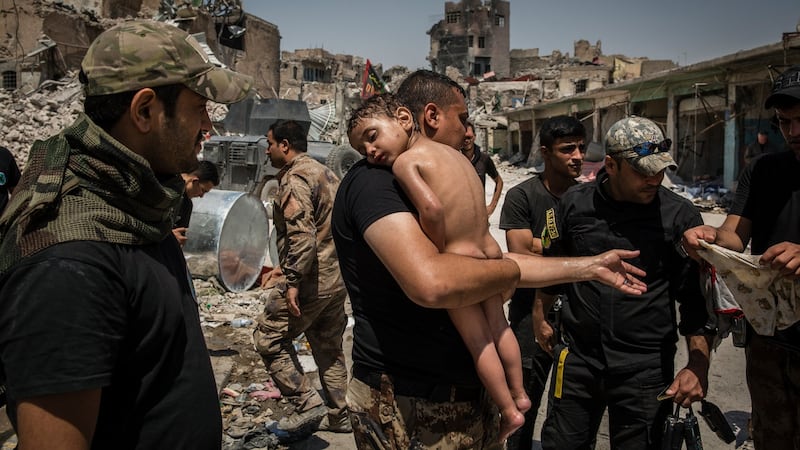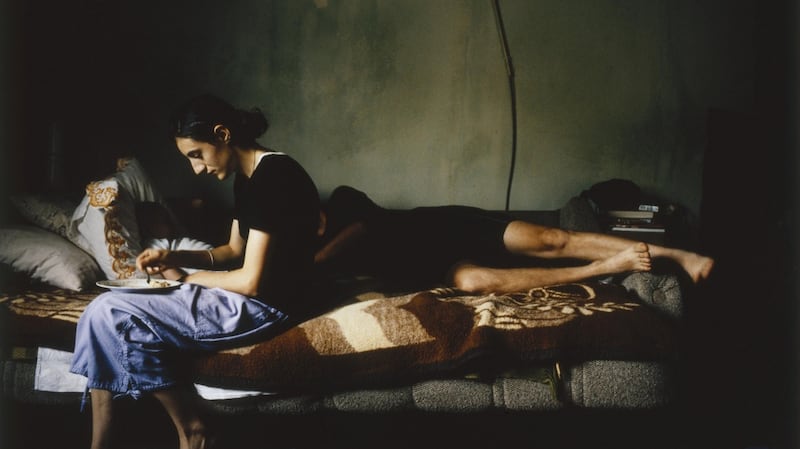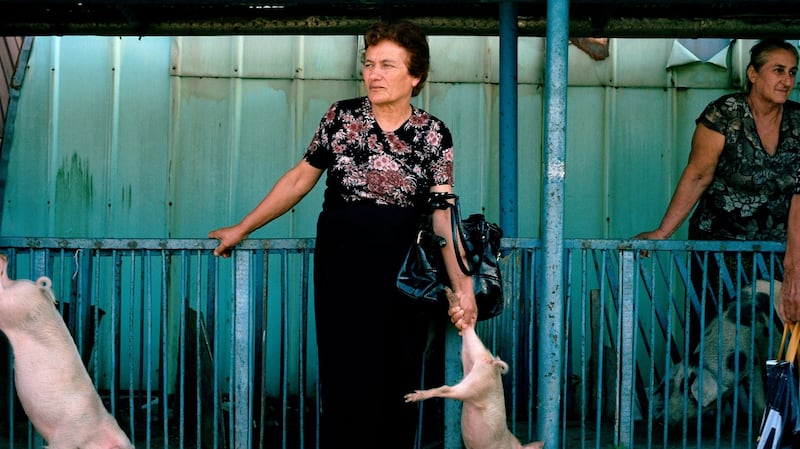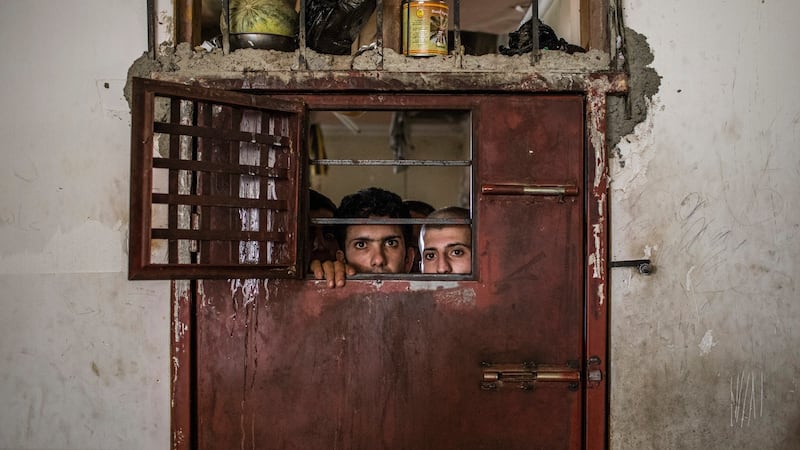There’s a certain visual diet of war that’s unflinchingly consumed. Wide shots of destruction where people, whether alive or mere remnants of those who once were, are often scattered across a frame. The pictures serve as a record, accompanying headlines and articles with words referring to things we hope to never come to know: “blast”, “maims”, “obliterated”. As our tolerance for such violence builds, a chasm opens up between the ink that reports the events and the human lives on the other end.
Cork-born documentary photographer Ivor Prickett has dedicated his work to closing this chasm.

“It’s so easy just to record and just to show people the destruction and the devastation and the death. But I don’t really know if that does it anymore. I don’t know if people respond to that,” he says.
And Prickett's efforts have not gone unnoticed. Last week he took first prize in the news photographer category at the 2018 World Press Photographers of the Year contest for his New York Times series "Battle for Mosul".
Born in Fermoy, Co Cork, about 40km north of Cork city, Prickett grew up in rural Ireland with an appetite for exploration. He moved to Navan, then attended King's Hospital where he did his Leaving Certificate and started to become interested in photography.
His mother was an avid documentarian of her children’s upbringings, and Prickett dug out the 35-millimetre camera she had used for an art project. After showing her son the basics of light metre reading and aperture, they set off for the west coast where he shot his first rolls of film and “caught the bug.”

Prickett then attended a black-and-white photography summer course at the Gallery of Photography in Dublin before entering his final year of secondary school. By sixth year his gaze was fixed on photography. Upon his request, King's Hospital reopened their dark room, then through his own knowledge of chemical mixing to process film, he began compiling a portfolio of work that would later earn his acceptance at Sallynoggin College for a diploma in photography.
While at Sallynoggin, Prickett's interest veered towards what remains at the heart of his work - documenting people. His human-focused documentation continued into his Bachelor of Arts in Documentary Photography in Newport, Wales.

The interest he had in documenting conflict, its aftermath and humanitarian consequences was one that developed in, what he describes as a, “slow reveal.” One of the first things to catch his lens’ eye out of university was the resettlement of Serbian Croats to their homes after the breakup of Yugoslavia.

As the effort to retake Mosul from the Islamic State of Iraq and Syria began in 2016, Prickett was drawn to its documentation. Initially arriving in the besieged city with the intention to freelance his coverage of the flight of tens of thousands of people, he was soon picked up by The New York Times .
As an embedded reporter with an Iraqi special forces unit, he’d often accompany troops and return to a base with a commander at night. The soldiers he was embedded with were fascinated by his decision, and often met his requests to accompany them along the lines of, “yeah, okay...you’re crazy, but you’re welcome.”
When the city had fallen and media coverage proclaimed the city liberated, Prickett stayed to cover the aftermath and was often limited by the state-enforced media blackout. But in this stint of his coverage, he captured the reverberating echoes of the siege itself: a young boy being carried out of the last Isis-controlled area of the Old City and the removal of an injured militant found in the basement of a decimated building.
Due to the constant threats, Prickett had to work in a way that diverged from his initial pattern of getting to know a subject deeply before photographing them. Even then he still brought something of ourselves to the images he captured. A photo of a young girl clutching her mother’s waist whilst waiting in line, the young helping the elderly in whatever capacity they could.
Prickett remains hopeful for the city and its recovery is something he’ll continue to document. “I think I’ll be stuck in Iraq for the next year or so again, but that’s okay. It’s a really fascinating, beautiful place amidst all the destruction and war.”
See a selection of photographs from this year's World Press Photo awards here.



















